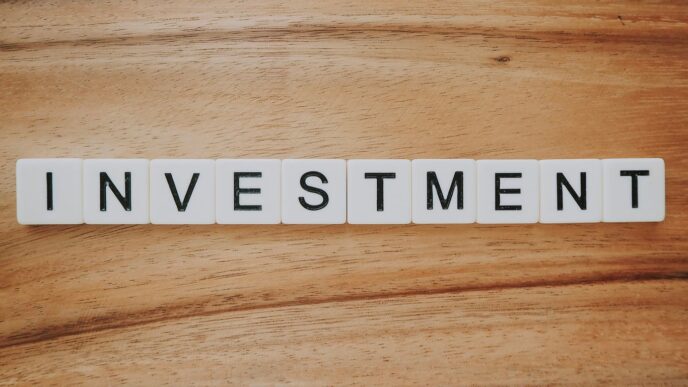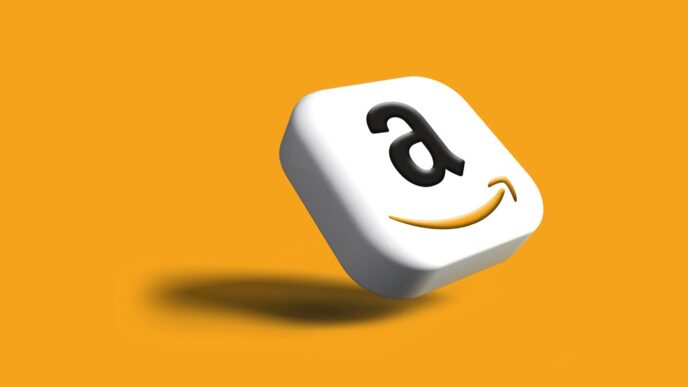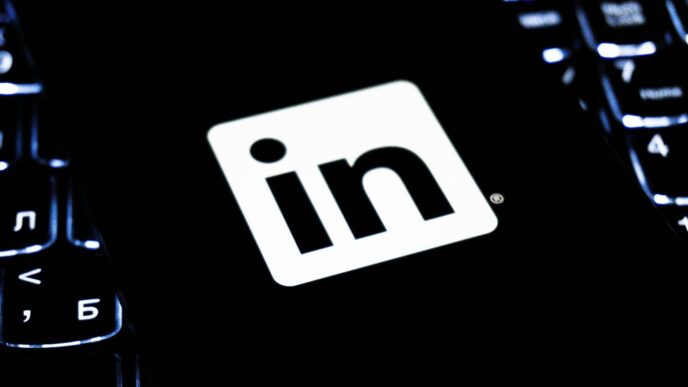So, you’re trying to figure out what is G2 and why everyone’s talking about it? It’s basically the go-to spot for checking out business software. Think of it like Yelp, but for all the tools companies use to get stuff done. People share their real experiences, good and bad, which really helps others decide what to buy. It’s a big deal in the software world, and understanding how it works can save you a lot of headaches when picking new tech for your business.
Key Takeaways
- G2 is a major platform where businesses can find and share reviews about software products.
- The site collects reviews by verifying users through business emails or LinkedIn, and asks specific questions to ensure feedback is legitimate.
- G2 features different types of reviews, including verified user feedback, business partner comments, and guest user opinions, clearly labeling any incentivized reviews.
- The platform uses a scoring system, including the Grid® Report, to rank software based on customer satisfaction and market presence.
- Vendors can use G2 to build credibility and gather insights, but G2 has rules against manipulating reviews to keep things fair.
Understanding What is G2
So, what exactly is G2? Think of it as a massive online hub where people share their real-world experiences with business software. It’s not just about listing products; it’s about getting the inside scoop from actual users. G2’s main goal is to make software buying easier by showing you what real people think. Instead of just relying on what a software company tells you, you can see feedback from thousands of others who have used the same tools.
Definition and Purpose of G2
At its heart, G2 is a platform for peer reviews of business technology. Its purpose is to give buyers a clear picture of how software products perform in everyday work situations. It collects feedback from users and then organizes it so you can compare different options. This helps people make smarter choices when they need to buy new software for their company. It’s like having a huge group of colleagues who’ve already tried out the software and are telling you what’s good and what’s not.
G2’s Role in the Business Software Marketplace
G2 has become a pretty big deal in the world of business software. It acts as a central place where companies can get noticed and where buyers can find what they need. For businesses looking for new tools, G2 provides a way to see how different products stack up against each other. It helps create a more open market because everyone can see the feedback. You can find reviews for almost any kind of business software you can think of, from project management tools to customer service platforms. It’s a go-to spot for many professionals trying to figure out the best tech for their jobs. You can check out G2.com to see for yourself.
The Core Mission of G2
The main mission driving G2 is to bring the customer’s voice to the forefront. They want to create a space where honest feedback about software is shared openly. This means providing detailed insights into user experiences, what features work well, and how satisfied people are overall. By doing this, G2 helps build trust and gives potential buyers more confidence when they’re making important decisions about technology investments. They aim to be a reliable source of truth in a market that can sometimes be confusing.
How G2 Collects and Verifies Reviews

So, how does G2 actually make sure the reviews you’re reading aren’t just made up by someone trying to game the system? It’s a pretty big deal for buyers trying to figure out which software to pick, right? They’ve got a few ways they handle this.
User Authentication Methods
First off, they don’t just let anyone leave a review. You usually have to prove you’re a real person who’s actually used the software. This often means linking up with your LinkedIn profile or using a work email address. It’s like showing your ID before you can get in. This helps cut down on people who aren’t actual users, like maybe a competitor or someone just messing around.
Targeted Questioning for Validity
When you go to write a review, they don’t just ask "Did you like it?". They ask specific questions about how you used the software, what features you liked or didn’t like, and how it fit into your work. This detailed questioning helps them figure out if your experience sounds legit and matches up with how the software is supposed to be used. It’s not just about a star rating; it’s about the details.
Review Campaigns and In-App Prompts
Sometimes, companies that sell software can ask G2 to help them get more reviews from their actual customers. G2 might send out emails or even have ways to ask for reviews right inside the software itself, if there’s a special connection. It’s like getting a nudge to share your thoughts when the experience is still fresh.
G2’s Review Safety Toolkit
Beyond the basics, G2 has this whole system they call a "Review Safety Toolkit." Think of it as their security team for reviews. It includes things like checking for spam, using technology to spot fake writing, and having people actually look over the reviews. They have rules for what gets approved, and they use a system to manage all the reviews coming in. It’s a multi-layered approach to keep things honest.
Types of Reviews Featured on G2
G2 features a few different kinds of feedback, and it’s good to know what you’re looking at. They want to make sure the reviews are real, but they also have different ways people can share their thoughts.
Verified User Reviews
This is the main type of review you’ll see on G2. These come from actual people who use the software in their jobs. G2 tries pretty hard to make sure these are legit. They usually check things like your work email or LinkedIn profile to confirm you’re a real user. These are the reviews that really shape a product’s score and reputation on the site. They ask specific questions about how you use the software, what you like, and what could be better. It’s not just a quick star rating; they want details.
Business Partner Reviews
Sometimes, people who resell software or work with the company that makes it might leave a review. G2 allows this, but they make it clear these reviews don’t count towards the product’s main rating or its G2 Score. Think of them as extra info, but not the primary driver of how a product ranks.
Guest User Reviews
This category is for people who might have been invited to try out a software product, maybe for a specific project or trial, but aren’t necessarily full-time employees using it within their company. G2 has ways to collect this feedback too, though the specifics of how they’re weighted might differ slightly from standard verified user reviews. It’s about capturing a broader range of user experiences.
Incentivized Reviews
Okay, so G2 does offer ways for companies to encourage their customers to leave reviews, and sometimes reviewers get a small thank you for their time. This could be a gift card or a donation to charity. G2 has rules about this to keep things fair. The idea is to get more people to share their honest opinions, not to buy positive reviews. They have systems in place to try and catch anything that looks fake or overly positive just because of the incentive. It’s a balancing act to get honest feedback without letting the rewards skew the results. You can read more about how G2 handles review incentives.
Navigating G2’s Rating and Ranking System
G2’s rating and ranking system is pretty neat for figuring out which software is actually good. It’s not just a popularity contest; they’ve got a whole setup to make sense of all the reviews.
Understanding the G2 Score Calculation
The G2 Score is basically a number that helps you compare different software products in the same category. It’s calculated using a special formula that looks at two main things: how happy customers are with the product (Market Satisfaction) and how well-known or used the product is (Market Presence).
- Market Satisfaction comes from things like:
- How users rate the software’s features and how easy it is to manage.
- How many people are talking about it and how recent those reviews are.
- Overall happiness and how likely people are to recommend it (like a Net Promoter Score).
- Market Presence looks at stuff G2 finds on its own, like:
- How many employees a company has.
- Their website and social media activity.
- How much the company is growing.
- The sheer number of reviews the product has on G2.
The G2 Score is updated daily, so it usually shows what’s happening right now.
The Grid® Report and Its Quadrants
This is where G2 really shows its colors. The Grid® Report is like a map of the software world for a specific category. It puts products into four different boxes based on their Satisfaction and Market Presence scores:
- Leaders: These products score high on both customer happiness and market recognition. They’re usually the big players.
- High Performers: These have happy customers but aren’t as widely known yet. They’re often up-and-coming.
- Contenders: These are well-known products but don’t get as high marks for customer satisfaction. They might have some issues users are pointing out.
- Niche: These products score lower on both counts. They might be good for very specific needs but aren’t mainstream.
To even get on a Grid® Report, a software category needs at least six products with 10 or more reviews. This helps make sure the report is based on real feedback.
Key Components of G2 Ratings
So, what actually goes into those scores? G2 uses a mix of data, and they weight it all differently.
| Component | Typical Weight | Key Factors |
|---|---|---|
| Review Ratings | 50-70% | Star ratings for ease of use, support quality, likelihood to recommend, etc. |
| Review Quality | 10-15% | How detailed, recent, and verified the reviews are. |
| Market Presence | 20-30% | Employee count, web traffic, review volume, age of reviews. |
| Social Media | 5-10% | Mentions, followers, and how much people interact with the brand online. |
| External Data | 5-10% | Website traffic, number of partners, etc. |
These rankings get refreshed every quarter, usually in January, April, July, and October. This gives companies a chance to improve their standing based on new customer feedback.
The G2 Review Submission Process
So, you’ve used a piece of software and want to share your thoughts on G2. It’s not too complicated, but there are a few steps involved to make sure everything stays on the up and up. First off, you need to prove you’re a real person with actual experience using the software. G2 makes you verify your identity, usually by linking your LinkedIn account or using a valid work email. This helps stop people who don’t actually use the product, or worse, competitors, from messing with the reviews.
Once you’re in, you’ll be asked some specific questions about your experience. They don’t just want a "good" or "bad." They want details about how you used the product, what features you liked or didn’t like, and how it performed for your specific needs. The more detail you can give, the better. It helps G2 confirm that your review is legit and relevant.
After you hit submit, your review doesn’t just pop up instantly. It goes through a review process. G2 has a whole system, kind of like a safety toolkit, to check for fake reviews, copied content, or anything that seems off. This includes things like checking for suspicious activity on your profile and making sure the content isn’t just a rehash of something else. A real person on G2’s team actually looks at each review. This can take a few days, and your review will be in a pending state until it’s approved.
There are a few reasons why a review might get rejected. If they can’t confirm who you are or your professional background, that’s a problem. If your review is super vague, sounds like it was written by a bot, or if you’re clearly an employee of the company you’re reviewing (or a competitor!), it won’t make the cut. They also check for copied content. If your review is rejected, G2 usually sends an email explaining why, so you can try to fix it if you think there was a mistake.
G2 for Vendors: Leveraging Customer Feedback
So, you’ve got a product, and you want people to know about it, right? G2 is a pretty big deal for businesses, especially if you’re in the software world. Think about it: most business buyers check out reviews before they even think about buying something. That’s where G2 comes in. It’s not just a place to collect comments; it’s become a whole marketing thing for companies.
Benefits of G2 Profiles for Businesses
Having a good G2 profile can really help your business. It’s like a digital handshake that builds trust. When potential customers see good things being said about your product by real users, they’re more likely to consider you. It’s social proof, plain and simple. Even the not-so-great feedback can be useful. It tells you what customers are actually struggling with, which is gold for figuring out what to fix or improve in your product. Honestly, it’s cheaper than doing a bunch of market research.
G2 Achievements and Their Impact
Getting recognized on G2, like being a ‘Leader’ or getting a ‘High Satisfaction’ badge, isn’t just for bragging rights. These achievements can actually move the needle for your business. For example, being in the Leader Quadrant on G2 reports can mean your company gets included in more Requests for Proposals (RFPs) by about 42%. If your product gets a high satisfaction score, like 4.5 stars or more, it can shorten your sales cycle by 35%. Even just having category badges can make your website’s landing pages convert 28% better. And if you get over 100 reviews? That can boost buyer trust by 53%. It shows that G2 isn’t just about reviews; it’s about real business results.
Vendor Strategies for Influencing Profiles
Now, you can’t just pay people to say nice things – G2 has rules against that, and they check. But there are legit ways to make your G2 profile shine. You can ask your happy customers to leave reviews. G2 also has its own incentive program for reviewers, which you can participate in. Responding to reviews, both good and bad, is also a smart move. It shows you’re listening and you care. The best strategy, though? Just make a great product and give good customer service. Then, make it easy for everyone to share their honest thoughts on G2. It’s about building a real reputation.
Reviewer Compensation and Platform Integrity
It’s a fair question, right? How does G2 manage to get so many reviews, and what’s in it for the people writing them?
G2’s approach to reviewer compensation is designed to encourage participation while maintaining the integrity of the feedback. They offer rewards, primarily in the form of gift cards, for submitting reviews. This isn’t about buying positive opinions, though. The compensation is for your time and the effort you put into providing a detailed, honest assessment of the software you’ve used. Whether your feedback is glowing or critical, the reward stays the same. It’s a way to say thanks for contributing to the community and helping others make informed decisions.
How G2 Compensates Reviewers
G2 uses a rewards program to thank contributors. Think of it as a thank you for sharing your experience. The main way they do this is through gift cards. These can be for popular retailers, giving you some flexibility.
- Gift Cards: The most common reward is a gift card, often for places like Amazon or Starbucks. The amount can vary, but it’s generally a modest sum meant to acknowledge your contribution.
- Campaign-Specific Bonuses: Sometimes, G2 runs special campaigns. These might focus on specific software categories that don’t have many reviews yet, or perhaps on newer technologies. During these times, the rewards might be a bit higher to encourage more people to share their thoughts.
- Referral Bonuses: If you get colleagues to contribute reviews through your referral, you might also earn extra rewards. It’s a nice way to get a little something extra while helping your team out.
Eligibility and Limits for Payments
Not everyone can just sign up and get paid, of course. G2 has some rules to make sure the reviews are legit.
- Verified Users: You generally need to have actually used the software you’re reviewing. G2 has ways to check this, like requiring a business email address or linking your LinkedIn profile. This helps filter out people who haven’t used the product.
- Review Quality: The review itself needs to meet certain standards. It should be detailed, balanced, and provide actual insights into how the software works, its pros, and its cons. Generic or unhelpful reviews might not qualify for rewards.
- No Vendor Affiliation: You can’t be affiliated with the company whose software you’re reviewing, or a direct competitor. This is a big one for keeping things unbiased.
Balancing Incentives with Transparency
It’s a tricky balance, for sure. G2 is pretty open about its rewards program, which is a good thing. They want to encourage more people to share their experiences, and offering a small token of appreciation is one way to do that. They also have systems in place to catch fake reviews or people trying to game the system. This includes looking at patterns in how reviews are submitted and using technology to flag suspicious activity. If a review looks off, G2’s team might look into it more closely. They want to make sure that the feedback you read on G2’s payroll software reviews is as real and helpful as possible. It’s all about making sure the platform remains a trustworthy place for businesses to find the software they need.
Wrapping It Up: Your G2 Toolkit
So, we’ve gone through what G2 is all about, how they get those reviews, and how they sort everything out with their scoring. It’s pretty clear that G2 isn’t just another place to read opinions; it’s a serious tool for anyone trying to pick the right software. By understanding how the reviews are collected and what the scores actually mean, you can use G2 to make smarter choices for your business. It cuts through the marketing noise and gives you a real look at what people are actually experiencing with different products. Keep this guide handy next time you’re on the hunt for new software – it’ll make the process a lot less guesswork.
Frequently Asked Questions
What exactly is G2?
Think of G2 as a giant online mall for business software. People who have used different software programs share their honest thoughts and give them ratings. This helps other businesses figure out which software is best for them, kind of like reading reviews for a video game before you buy it.
How does G2 make sure reviews are real?
G2 gets reviews by asking people to prove they’ve actually used the software. They check things like your work email or your LinkedIn profile. They also ask specific questions about how you used the software to make sure the review is real and helpful.
What types of reviews can I find on G2?
G2 has different kinds of reviews. Most are from regular users who work with the software. They also allow reviews from business partners, but these are marked differently. Sometimes, people get a small gift card for sharing their thoughts, but G2 clearly labels these reviews so everyone knows.
How does G2 rank software?
G2 uses a special scoring system. It looks at how happy customers are with the software and how well-known the software is. They put this information on charts called ‘Grid® Reports’ that show which software is a ‘Leader,’ ‘High Performer,’ ‘Contender,’ or in a ‘Niche.’ It’s like a report card for software.
How do I leave a review on G2?
If you’ve used a software, you can write a review on G2. You’ll need to share some details about your experience. G2 might reject a review if it looks fake, doesn’t have enough detail, or if you work for the company you’re reviewing.
Does G2 pay people to write reviews?
Yes, G2 sometimes gives gift cards to people who write reviews. This is to thank them for their time and honest feedback. They don’t pay extra for good reviews, though – they want honest opinions, good or bad. They also make sure to label these reviews so it’s clear.














